Meet the 2024 Norris Center Art + Science Fellows
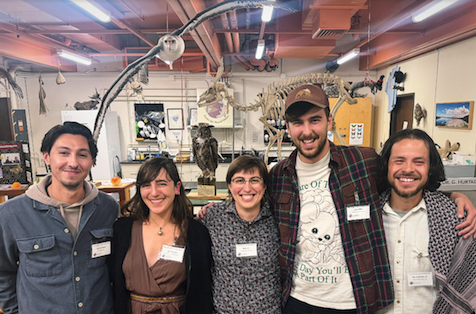
Congratulations 2024 Norris Center Art + Science Collaborative Graduate Fellows!
This new Fellowship is designed to support graduate students engaging with Art and/or Art + Science Collaborative research projects that relate to Natural History or the Natural World. Each fellowship award of $2500 is made possible by the generous gifts of private donors to the Norris Center.Gonzalo Galetto (PhD Candidate FDM), Dima Mabsout (MFA Candidate EASP), Raty Syka (MFA Candidate EASP), Jonas Banta Raty Syka (MFA Candidate EASP), Alberto M Vazquez (MFA Candidate EASP). *not pictured is collaborator Brooke Thompson (PhD Candidate Environmental Studies).
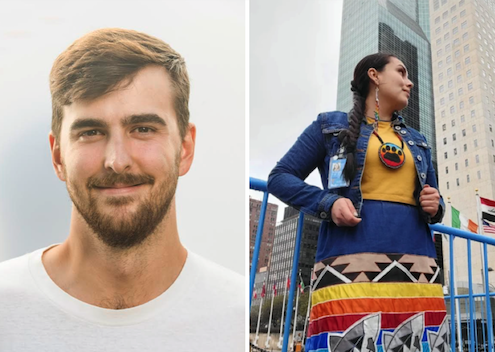
Through collaborative research, Brook Thompson and Jonas Banta are seeking to build a body of images which serve to support community memory and understanding of the Klamath River restoration process. Brook and Jonas hope to bring Indigenous epistemologies and methodologies to the research and analysis currently being conducted on the Klamath watershed, in the interest of better outcomes for surrounding and allied Indigenous communities.
Brook Thompson. I am a Yurok and Karuk Native American from Northern California. Growing up, I went between the Yurok Reservation and school in Portland, OR. I am a Ph.D. student at the University of California Santa Cruz and work as a Restoration Engineer for the Yurok Tribe. In 2022 I graduated with an M.S. at Stanford University in Environmental Engineering with a focus on Water Resources and Hydrology. In 2020 I received my B.S. from Portland State University's Honors College with a degree in Civil Engineering and a minor in Political Science.
Jonas Banta is a first-year MFA student in the Environmental Art and Social Practice program at UC Santa Cruz. He earned a BA in Indigenous Environments and a minor in Studio Art from Pitzer College in 2020. Jonas was born and raised in Dehgeyay Kaq’, also known as Anchorage, Alaska, where he learned to fish, make pictures, build community, and love his home. His research explores the intersections between Indigenous sovereignty and cultural-ecological restoration, focusing on anadromous fish habitat. Jonas is an enrolled member of the Three Affiliated Tribes of Mandan, Hidatsa, and Arikara.
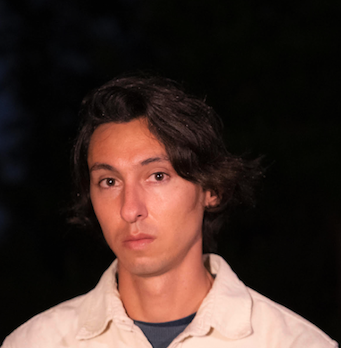 Gonzalo Galetto is a 4th year Ph.D. student in the Film and Digital Media department. His work and research explores contemporary artistic practices that are responsive to the current climatic conditions and which propose a poetics of attention that is situated in place. He experiments with artistic methods coming from experimental film and music to create works and situations that engage the elements and the environment and in which the ecological becomes embodied in relation, re-imagining modes of being with more-than-human subjects.
Gonzalo Galetto is a 4th year Ph.D. student in the Film and Digital Media department. His work and research explores contemporary artistic practices that are responsive to the current climatic conditions and which propose a poetics of attention that is situated in place. He experiments with artistic methods coming from experimental film and music to create works and situations that engage the elements and the environment and in which the ecological becomes embodied in relation, re-imagining modes of being with more-than-human subjects.
In collaboration with the Norris Center he will make a video work of encounters with fog titled Niebla Nocturna which will consist of mostly nocturnal observations of fog using specialized equipment, such as temperature and humidity monitors, thermal imaging or infrared cameras, video cameras and light projections. The project focuses on fog as part of a coastal fabric of relations, and as a medium with which to sense the climatic conditions that are specific to this area of California. It is a project about place-based artistic methods that enable a unique understanding of the atmosphere and make possible the reorientation of our perception toward a climatic condition that shapes coastal life. One that requires specific modes of sensing, feeling and interaction that shift our habits to those of its movements in order to get closer to understanding its relation to the local ecology.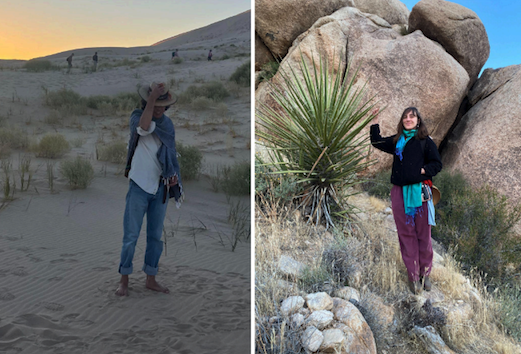
Collective Landscapes by Dima Mabsout and Alberto M Vazquez
Our research aims to develop immersive art field methodologies that uncover the (in)visible
stories embedded in the landscapes we collectively inhabit. Taking the UCSC campus and its
natural reserves as primary sites, we will create a series of collaborative workshops that invite
the body to extend from the personal towards the socio-political spaces that have shaped and
continue to shape land.Dima Mabsout is a Lebanese artist and first year graduate student in Environmental Art + Social
Practice MFA program. In recent years she was co-creating street performances and
interventions with Zayraqoun collective, leading community art programs with Catalytic Action
design Studio, teaching at Horshna forest school, and beginning her land based research with
the Museum for the Displaced. In moving to Santa Cruz, she is listening to this new landscape.
What stories live on its surface? What memories are buried in the soil? What seeds are waiting
to sprout? Through site-specific performance, film, photography, printmaking and collaboration,
she is observing the colonial wounds embedded in land, tracing patterns of erasure across
space and time, and drawing lines of solidarity.Alberto Miguel Vazquez is a Central California Chicano artist in his first year in the
Environmental Art + Social Practice MFA program at UC Santa Cruz. His work exists between
the Santa Maria Valley, the Central Valley’s Fresno, and the Monterey Peninsula and all involve
multidisciplinary approaches to collaborating with the communities in these areas. Alberto
Miguel is a Folklorico and Azteca Danzante, Storyteller, Musician, Muralist, Sculptor, Performing
Artist, and active community member in each of the spaces he inhabits. It is in this practice of
responsive community building that is central to his practice at UCSC. He’s now researching the
potentialities behind collective dreaming, of practicing radical inclusivity to envisioning pathways
to navigate the changing socio-political landscape he and the collective face. More specifically,
his research is investigating what inherent properties exist within natural landscapes that can
help the collective process grief, joy, and action.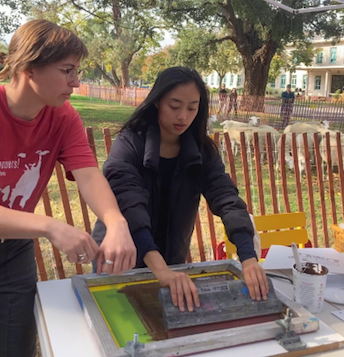 Raty Syka is an illustrator, comic artist, and printmaker based in Santa Cruz, CA, with an academic background in sociocultural anthropology. As a candidate in UC Santa Cruz’s Environmental Art & Social Practice Program (MFA ‘24), Raty has been interested in creating visual media that conveys issues at the heart of agriculture and sustainability in surprising ways. Current research interests surround sheep and goat grazing for wildfire prevention throughout the state of California.
Raty Syka is an illustrator, comic artist, and printmaker based in Santa Cruz, CA, with an academic background in sociocultural anthropology. As a candidate in UC Santa Cruz’s Environmental Art & Social Practice Program (MFA ‘24), Raty has been interested in creating visual media that conveys issues at the heart of agriculture and sustainability in surprising ways. Current research interests surround sheep and goat grazing for wildfire prevention throughout the state of California.
During the Norris Center Fellowship year, I will be exploring the ways in which a short-form comic can convey information about wildlife behavior. By following a night in the life of a coyote, I ask the question: how can a comic convey the perspective of an animal in a way that decenters the human? And beyond that, how can natural comics like this be used as educational tools for broad audiences?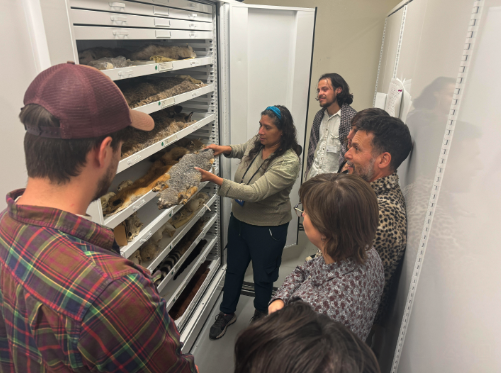 Dr. Gizelle Hurtado, Norris Center Assistant Director, showing museum specimens to Norris Center Art + Science Collaborative Graduate Fellows and their faculty sponsors.
Dr. Gizelle Hurtado, Norris Center Assistant Director, showing museum specimens to Norris Center Art + Science Collaborative Graduate Fellows and their faculty sponsors.
